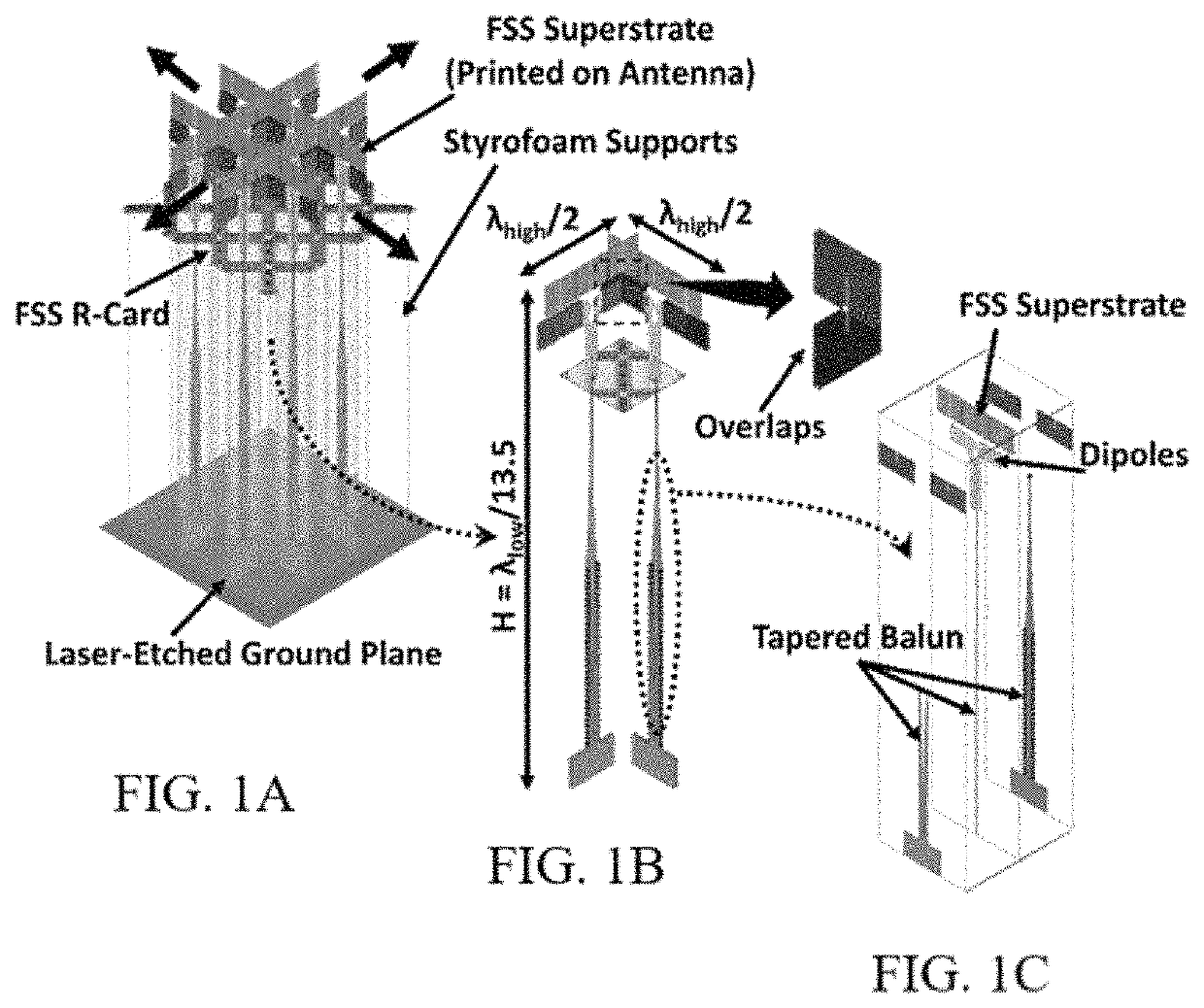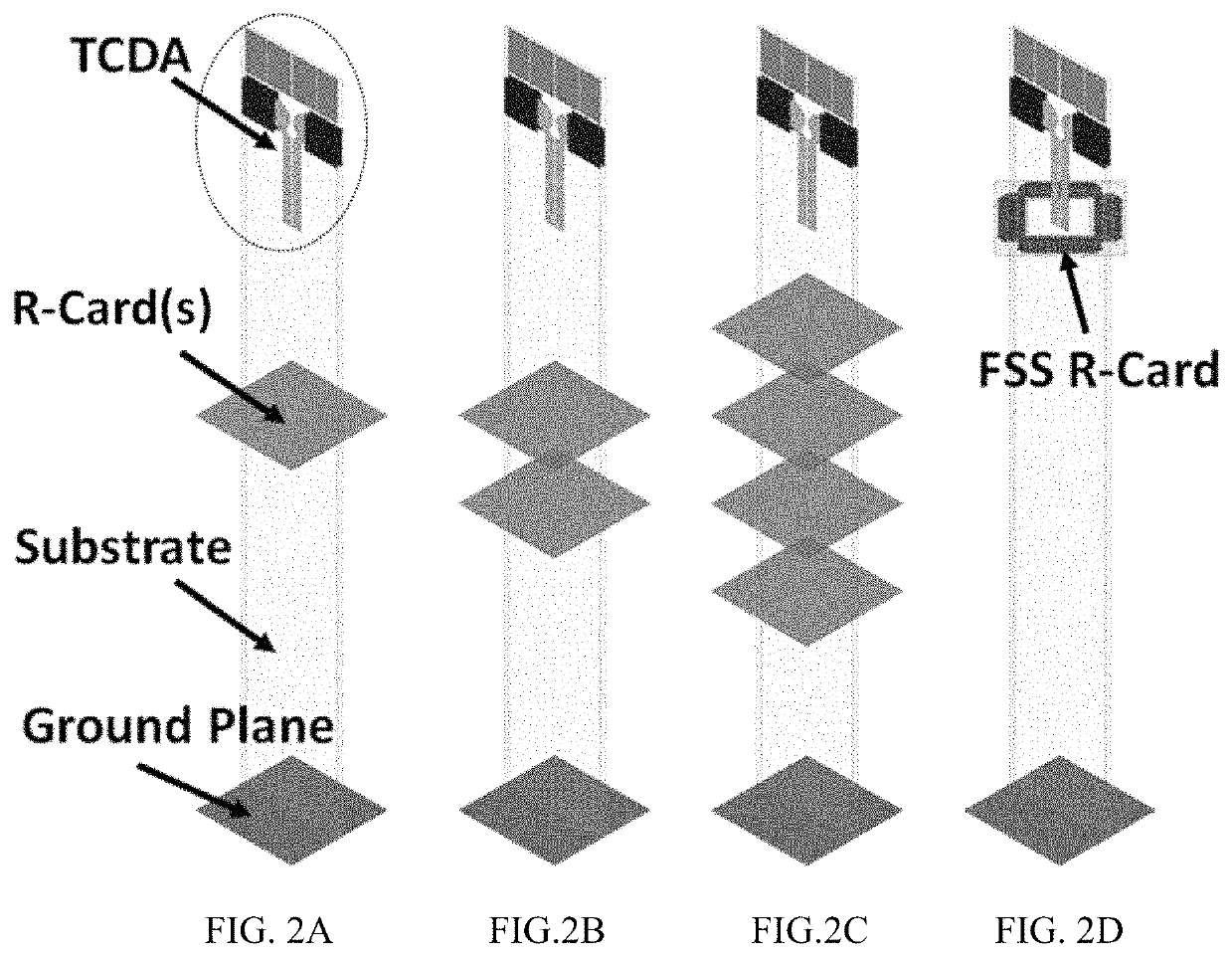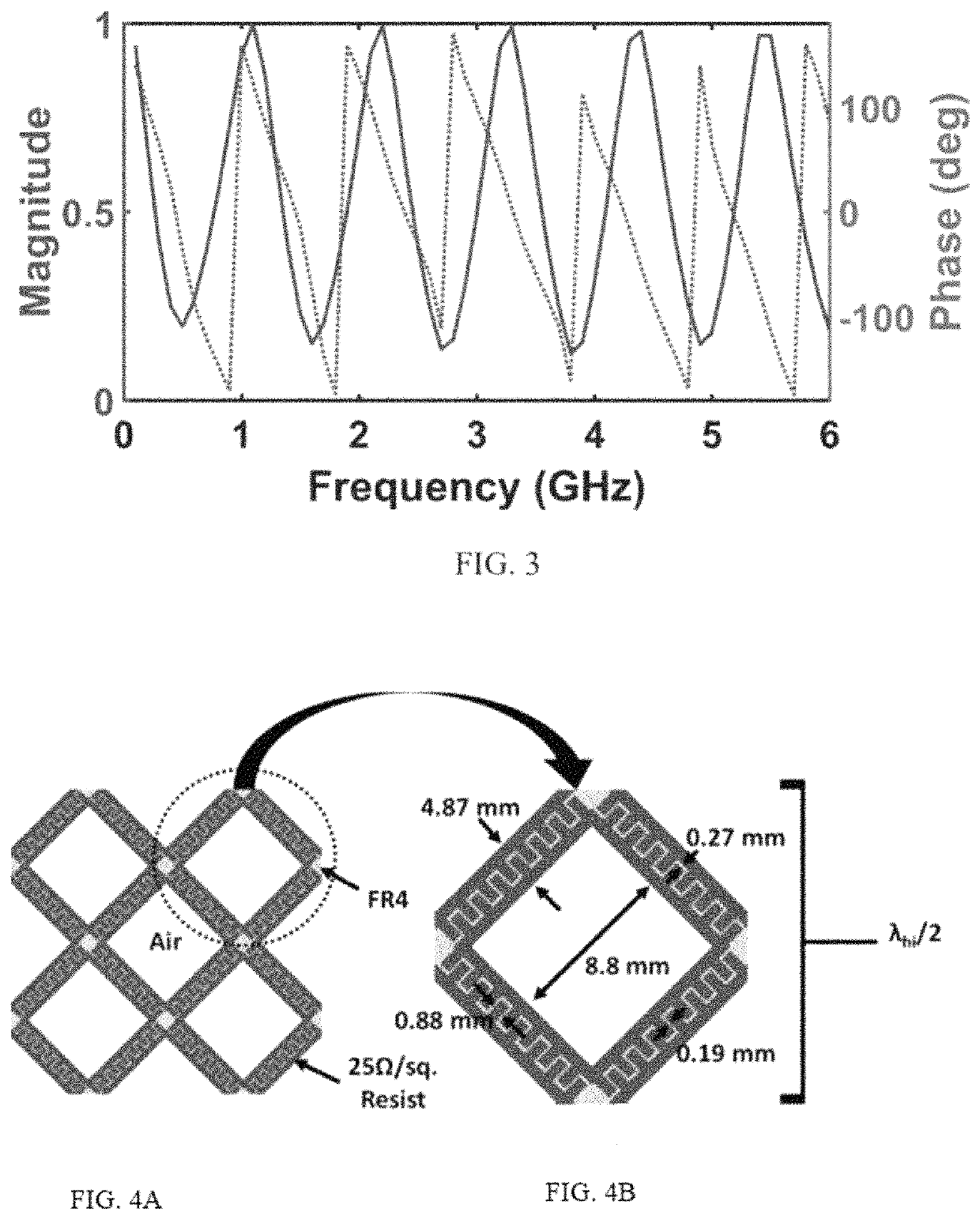Antenna devices to suppress ground plane interference
a technology of ground plane interference and antenna device, which is applied in the direction of antenna coupling, antenna details, antennas, etc., can solve the problems of limited bandwidth with small size, limited scanning range, etc., and achieves good spatial scanning, suppressing ground plane interference, and increasing total efficiency
- Summary
- Abstract
- Description
- Claims
- Application Information
AI Technical Summary
Benefits of technology
Problems solved by technology
Method used
Image
Examples
example 1
[0058]An infinite array simulation was used to represent a 12×12 finite element array of the TCDA shown in FIGS. 1(a)-1(c) (FIG. 1(a) shows a 4×4 section of the 12×12 array) 1 using ANSYS HFSS v.19. The plane containing the direction of the current is denoted as the E plane, with the perpendicular plane denoted as the H plane. The infinite array VSWR for the principle planes, with scanning to 60° is shown versus frequency in FIG. 6. The array was designed for a VSWR<3 for 0.13 GHz to 6 GHz for an impedance bandwidth of 46:1 with scanning. A reduced performance in the low frequency H-plane VSWR is expected when scanning to low angles with dual-polarized planar arrays due to its 1 / cos(θ) free space impedance, hence the mismatch around 2 GHz at 60°. The array was characterized by its near theoretical gain and average principle plane polarization purity of 40 dB as shown in FIG. 7. The co- and cross-polarized gains of the unit cell for the D-plane, with scanning to 60°, are shown versus...
example 2
[0059]A 12×12 dual-polarized TDCA was fabricated and tested. The TDCA included an FSS R-card and is shown in FIGS. 9, 10(a), 10(b), 11, 12(a), 12(b), and 23-26. The FSS metal superstrate was printed on the vertical antenna cards for optimized scanning performance. The antenna board was constructed from two layers of 10 mil (1 mil=0.001 inches) thick Rogers 3003 with εr=3.0. The fabricated ground board was milled from a metalized 60 mil FR4 board with cutouts for securing the antenna cards. A total of four ground plane sections were joined together with copper tape to form a lightweight, structurally stable and resonance free ground plane for testing the array.
[0060]The tolerances of commercial PCB manufacturing were constantly considered in the design process, where metal thickness and via misalignment result in a significant change from the ideal design. The design used 10 mil diameter vias and a minimum metal tolerance of 0.1524 mm (6 mil) in accordance with standard low-cost comm...
PUM
 Login to View More
Login to View More Abstract
Description
Claims
Application Information
 Login to View More
Login to View More - R&D
- Intellectual Property
- Life Sciences
- Materials
- Tech Scout
- Unparalleled Data Quality
- Higher Quality Content
- 60% Fewer Hallucinations
Browse by: Latest US Patents, China's latest patents, Technical Efficacy Thesaurus, Application Domain, Technology Topic, Popular Technical Reports.
© 2025 PatSnap. All rights reserved.Legal|Privacy policy|Modern Slavery Act Transparency Statement|Sitemap|About US| Contact US: help@patsnap.com



